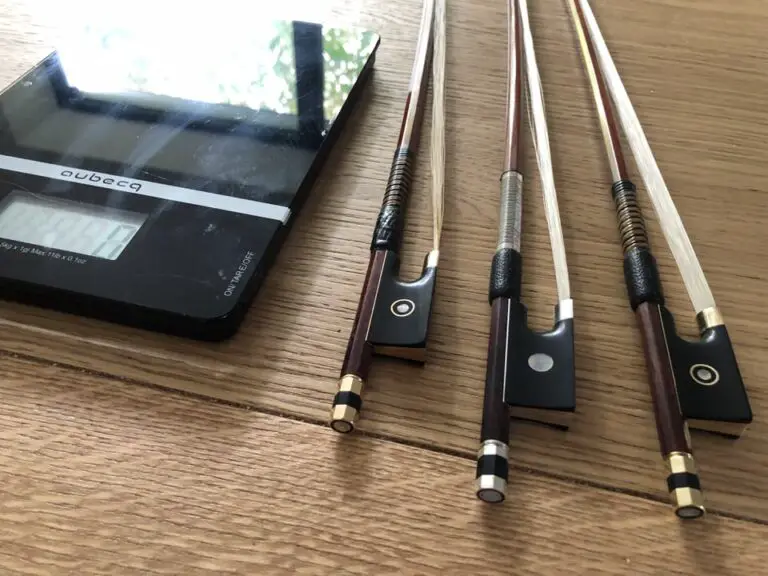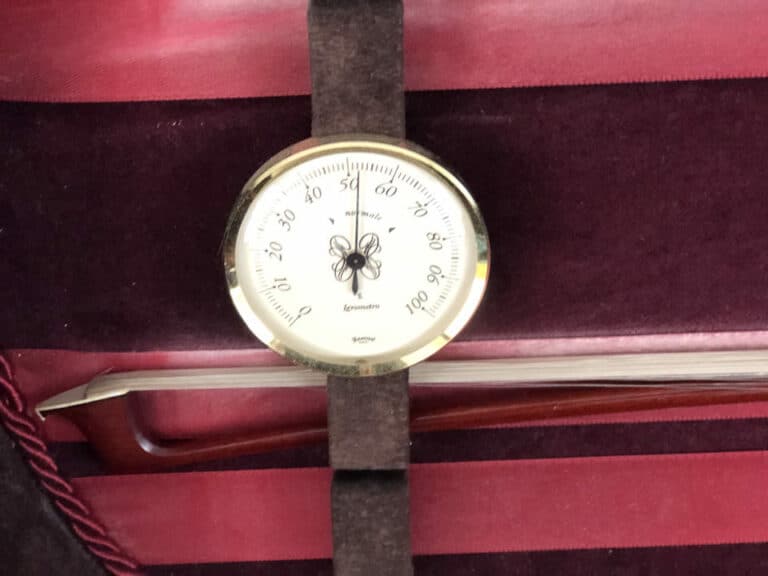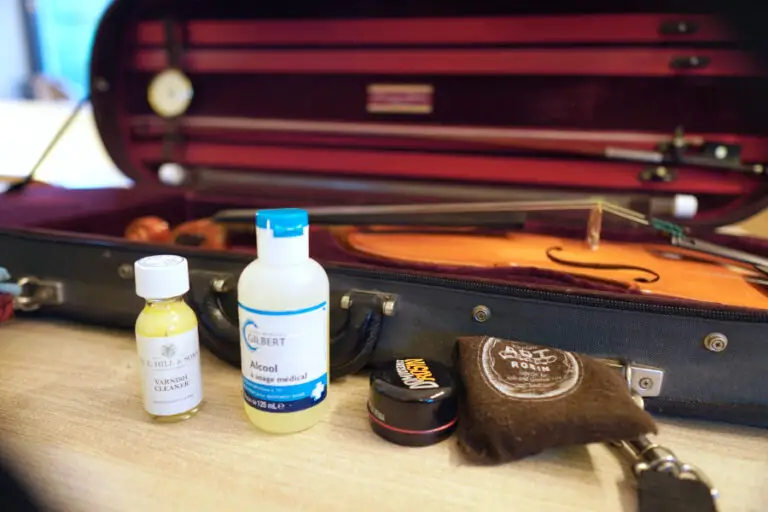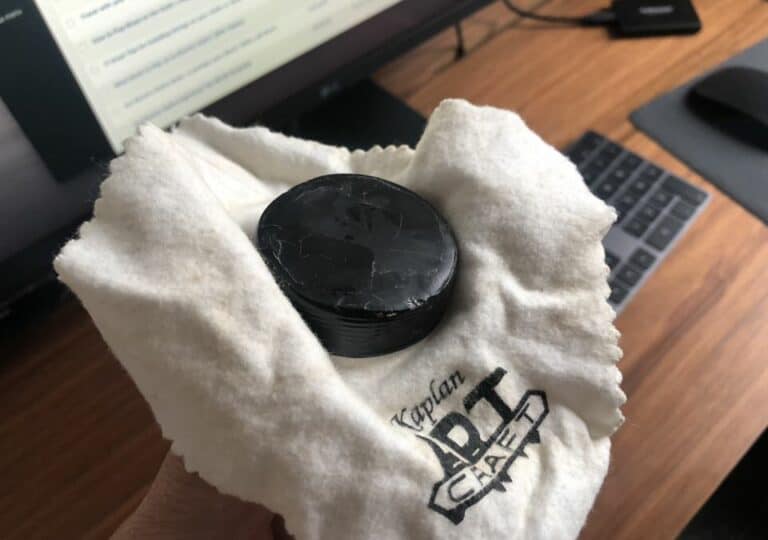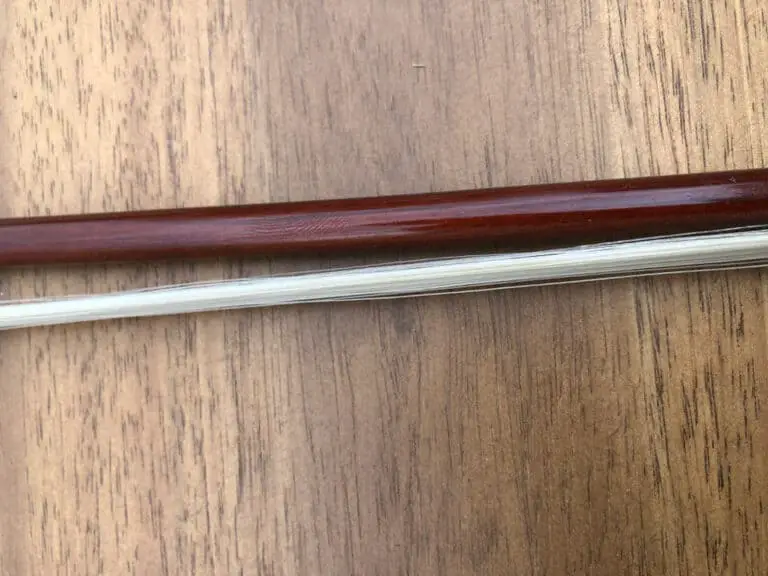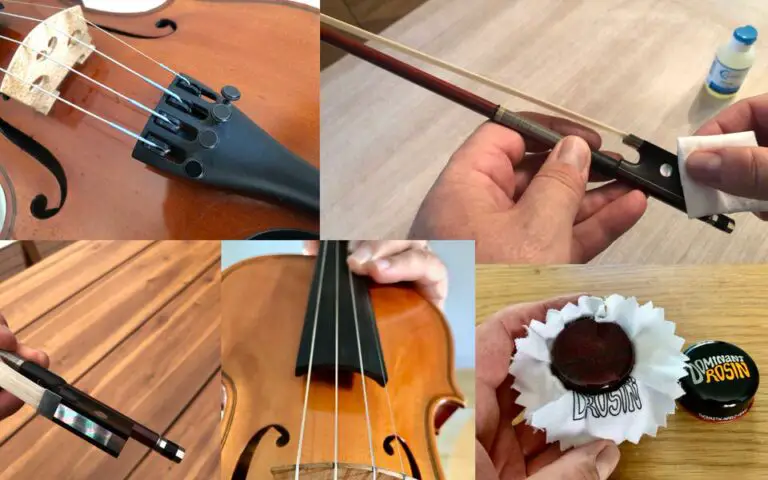What is a Violin Bow? An overwhelming FAQ
A violin bow is a vital component in the art of playing the violin, a tool that has evolved over centuries and plays a crucial role in producing the instrument’s unique sound.
Each time I play music, people are curious about this part of the violin they know nothing about: the bow. I have many questions, especially about the hair of the bow. This is why I want to sum up here for you everything we need to know, in a nutshell, about what is often considered an accessory but is an instrument in its own right: the violin bow.
Understanding the violin bow involves looking into its parts, history, materials, and purpose, each aspect contributing to its function and the music it creates.
Description of a Violin Bow
While to the untrained eye, a violin bow might merely appear as a slender, arched rod adorned with a strip of hair; its design is the culmination of centuries of craftsmanship. Typically spanning about 29 inches, the bow is meticulously crafted to resonate with the violin strings, generating sound through the principles of friction and vibration. The bow’s hair, predominantly sourced from horse tails, is seasoned with rosin, a resinous substance that augments its traction on the strings. The ensuing interaction between bow and strings is what births the violin’s sonorous melodies.
Violin Bow Parts
A violin bow consists of several key parts, each contributing to its functionality. The main parts include: (source)
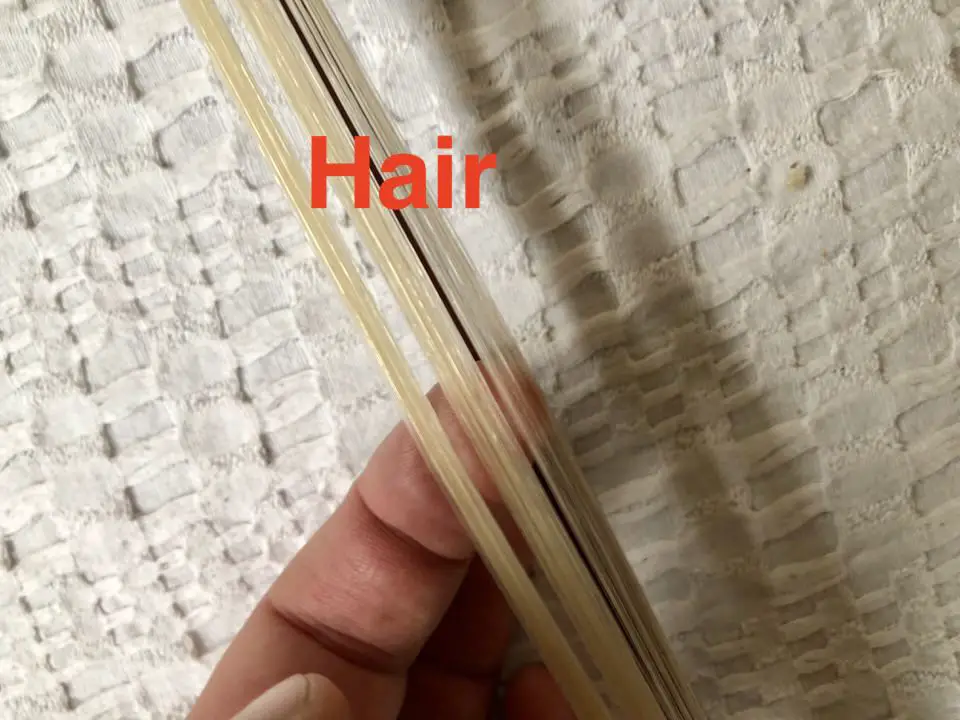
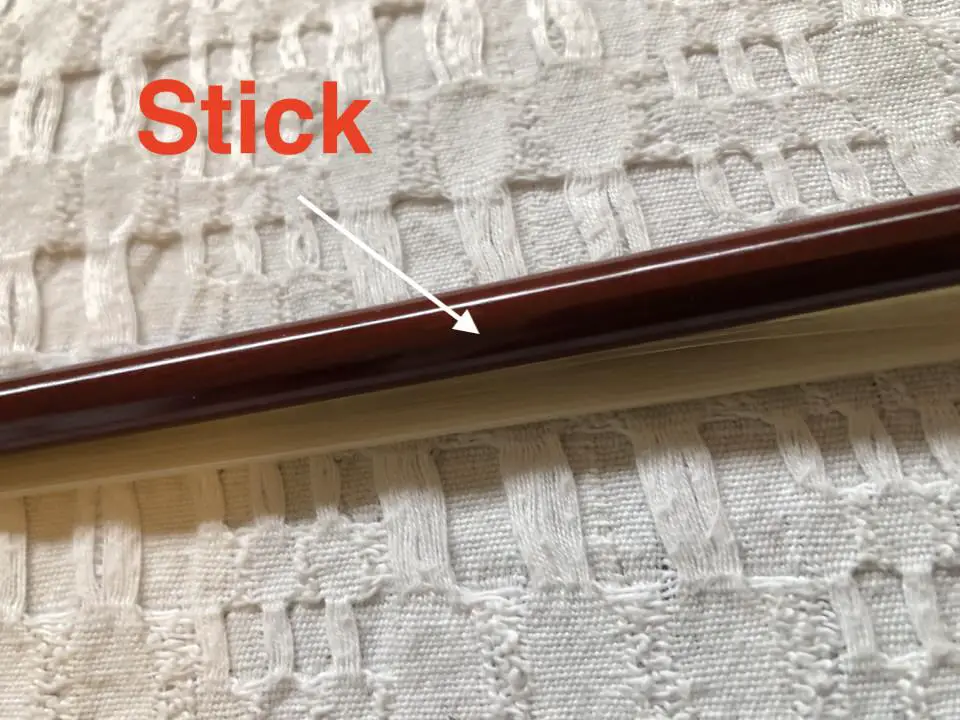
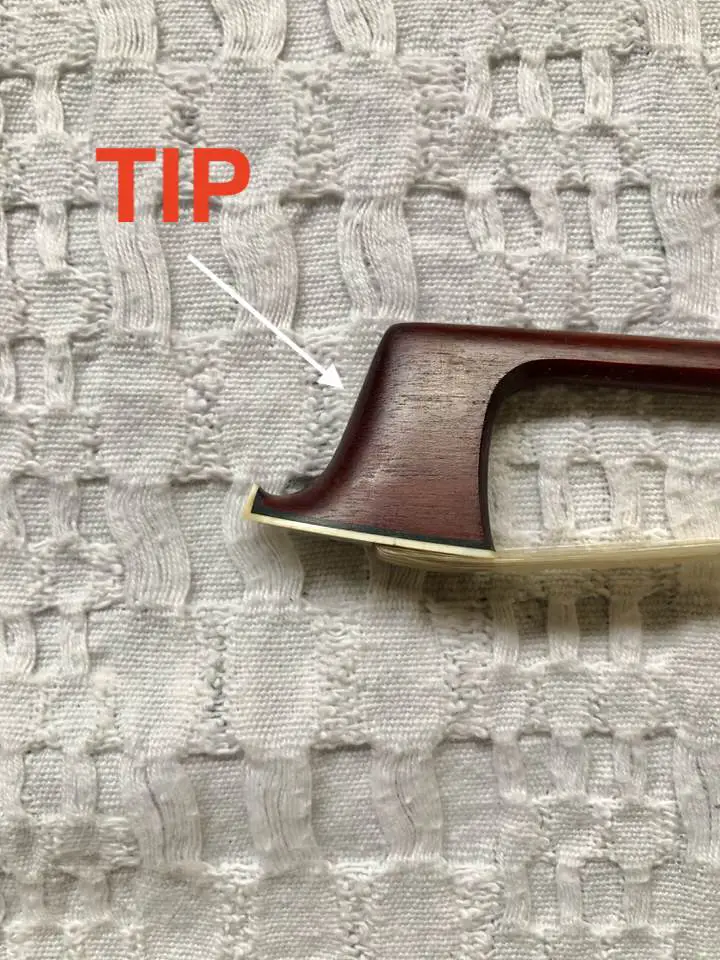
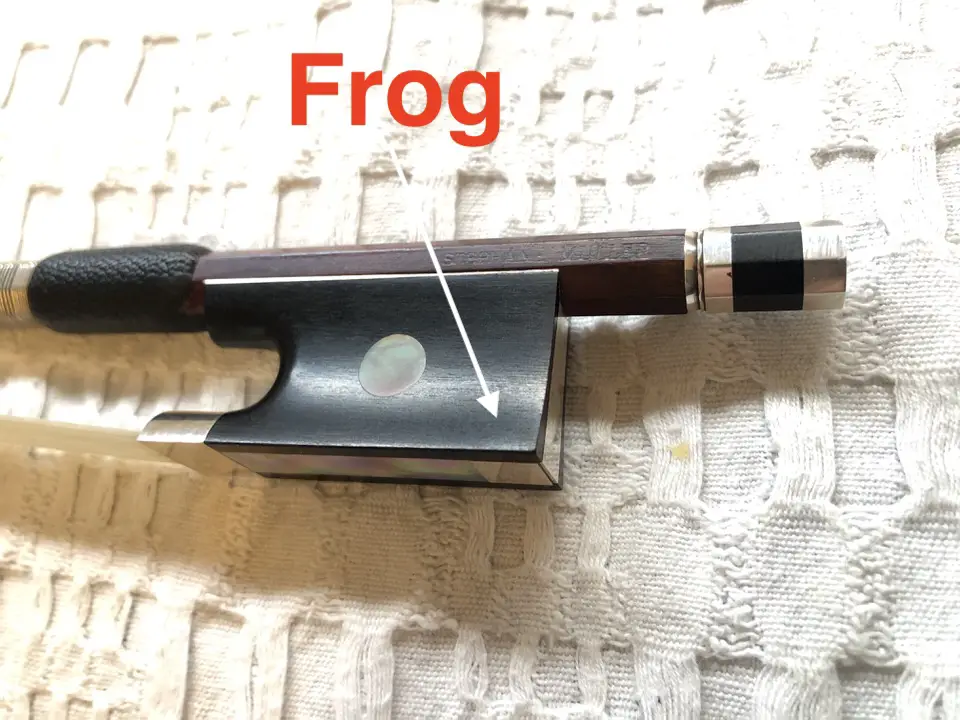
- The Stick: The main body of the bow, traditionally made from pernambuco wood, is known for its flexibility and strength. The stick can be round or octagonal.
- The Tip: The end of the bow opposite the frog, it helps in balancing the bow and is often made from ivory or metal.
- The Hair: Made from horsehair, the bow hair is the part that interacts with the violin strings to produce sound. The quality of the hair greatly affects the sound produced. The tiny scales of the natural hair hold rosin dust and allow the bow to bite into the strings and make a sound.
- The Frog: The part near the end of the bow where the player holds it. The frog allows for the tightening or loosening of the bow hair and is often decorated.
- The Screw: Located at the end of the frog, it is used to adjust the tension of the bow hair.
- Pad: The thumb’s cushioned resting point, ensuring grip and comfort.
- Ferrule: A metallic fixture, anchoring the hair to the frog.
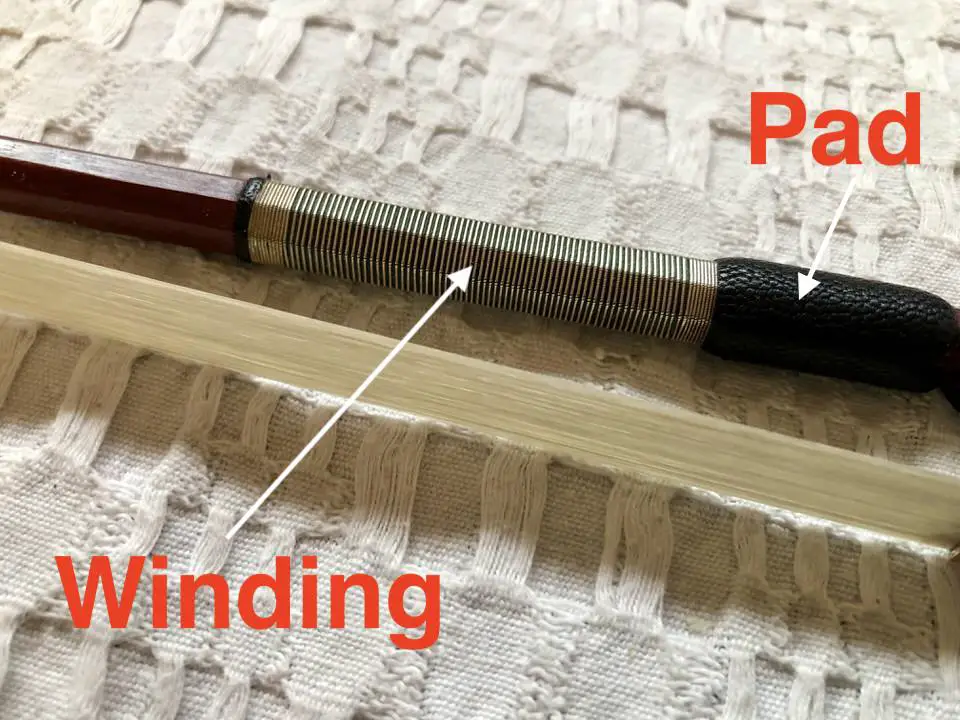
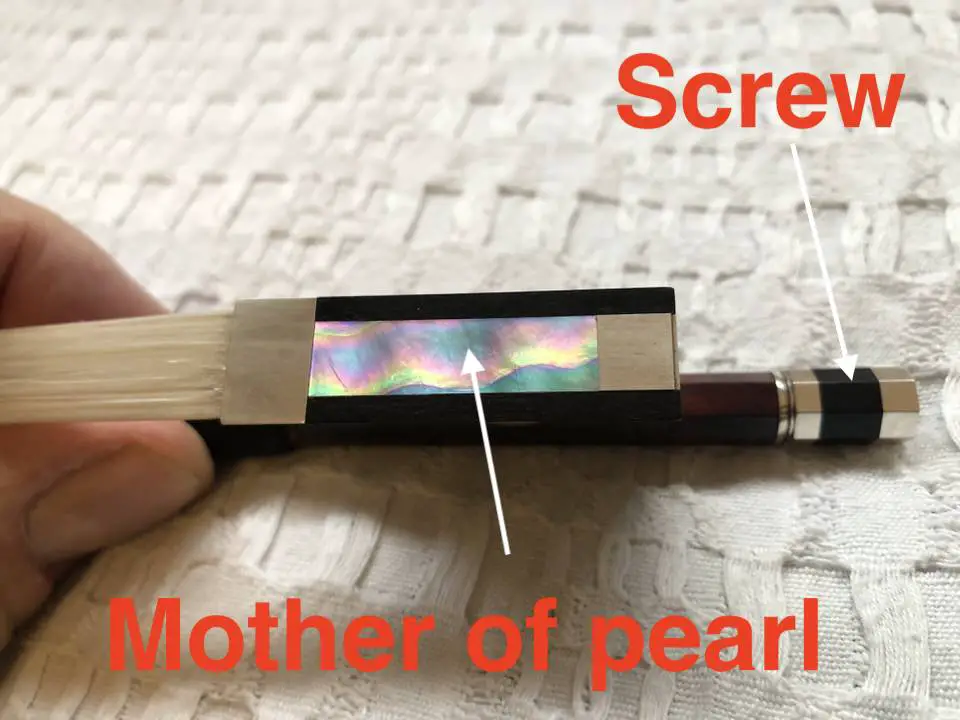
Brief History of the Violin Bow
The history of the violin bow is intertwined with the history of the violin.
The earliest bows, dating back to the 16th century, were quite different from modern bows, being shorter, lighter, and curved outwards.
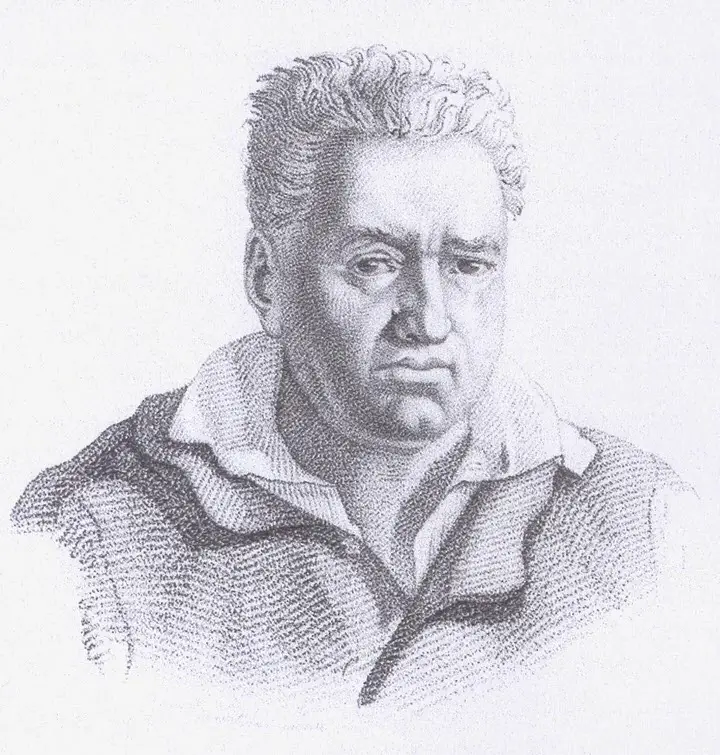
In the 18th century, the famous bow maker François Tourte, known as the ‘Stradivari of the bow,’ revolutionized bow design. He extended the length, introduced the concave shape, and standardized the use of pernambuco wood, setting the template for the modern violin bow.
What is a Violin Bow Made of?
The choice of materials for a violin bow is crucial for its performance.
The stick is traditionally made from pernambuco wood, prized for its balance of elasticity and strength. In recent times, alternative materials like carbon fiber are also used due to conservation efforts.
The hair is typically horsehair, selected for its ability to grip the violin strings and produce a rich sound. The frog is commonly made from ebony, though other woods and synthetic materials are also used.
Other materials like ivory, bone, and metal are used for the tip and decorative elements.
What’s a Violin Bow Purpose?
The primary purpose of a violin bow is to produce sound from the violin strings. It does this through the friction between the bow hair and the strings. The bow enables the violinist to control dynamics, articulation, and the expressive qualities of the sound. The way a violinist holds and moves the bow – the bow grip and bowing technique – significantly influences the tone and character of the music produced. The bow’s design and balance facilitate different techniques like legato, staccato, spiccato, and others, allowing the violinist to express a wide range of emotions and styles.
The Role of the Bow: Sound and Rhythm
Beyond its physicality, the bow is the maestro directing the symphony of sounds emanating from the violin. Its movement’s intricacies— speed, pressure, and angle on the strings—orchestrate the instrument’s dynamics and tonality. A skilled violinist manipulates these variables to paint an auditory tapestry, ranging from the gentle whispers of pianissimo passages to the commanding roars of fortissimo sections.
The Importance of the Bow: Tone, Sound Production, and Bow Strokes
Describing the bow as the violinist’s paintbrush wouldn’t be far-fetched. Its strokes, ranging from the seamless legato to the punctuated staccato, dictate the character of the musical piece. Additionally, advanced techniques like flautando (a harmonically rich, flute-like sound) or sul tasto (playing near the fingerboard for a softer tone) further showcase the bow’s versatility. A high-quality, well-balanced bow can be the linchpin in achieving the desired tonal richness, enabling violinists to extract the fullest resonance from their instruments.
Conclusion
The violin bow is not just a simple accessory but an intricate and essential part of the violin. Its design, evolved over centuries, reflects a deep understanding of craftsmanship and musical expression. The choice of materials and the skill in its use are crucial in translating the violinist’s intentions into the rich, vibrant sounds that define the violin’s character. As such, the violin bow is not only a tool but a testament to the enduring blend of art and science in music.
FAQ on Violin Bows
What is the ideal weight for a violin bow?
The weight of a violin bow typically ranges from 58 to 62 grams. The ideal weight can vary based on personal preference and playing style. A heavier bow might offer more control for a robust sound, while a lighter bow can facilitate quick and delicate strokes. I have detailed the importance of bow weight in this blog post.
How often should I rehair my violin bow?
It’s recommended to rehair a violin bow every 6 to 12 months, but this can vary based on how often you play and the conditions in which the bow is kept. If you notice the hair getting worn, fragile, or uneven, it might be time for a rehair.
Can I use any type of rosin for my violin bow?
Different types of rosin are available, tailored to different instruments and climates. Violinists typically use a lighter, harder rosin. The choice of rosin can depend on factors like humidity, the type of strings you use, and personal preference. Orchestra musicians can prefer brown, softer rosin; soloists often choose clearer and brighter ones. Here is how to select your rosin.
How do I know if a bow is of good quality?
A good quality bow should be well-balanced, straight, and even curved. The wood should be of high quality (like Pernambuco), and the frog should fit snugly and operate smoothly. Ultimately, how the bow feels and sounds when you play is a crucial indicator of its quality: stability (for chords and cantilena) and bounciness (for bow strokes such as spiccato and saltelatto)
What’s the difference between a carbon fiber and a wooden bow?
Carbon fiber bows are known for their durability, consistency, and resistance to environmental changes. Wooden bows, especially those made from Pernambuco, are prized for their superior sound quality and flexibility. The choice between the two often comes down to personal preference and playing needs.
Why does bow hair break, and what should I do if it does?
Bow hair can break due to dryness, excessive tension, or natural wear and tear. If a few hairs break, you can trim them at the frog or tip. However, if there’s significant breakage, it’s best to get the bow rehaired. If hairs break all on the same side, the uneven tension might damage the stick and make it twist.
How tight should the bow hair be?
When tightened, there should be about a pencil’s width of space between the hair and the middle of the bow stick. Over-tightening can damage the bow, while too loose hair won’t produce an effective sound. Here is my bow-tightening how-to.
How should I store my bow when not in use?
Can I repair a broken bow?
Some damages, like a snapped stick or severe warping, are typically irreparable or not cost-effective to fix. However, issues like a loose frog, worn grip, or damaged hair can often be repaired by a professional.
How do I choose the right bow for my playing level?
Beginners might start with a more affordable, durable bow, often made of synthetic materials. Intermediate and advanced players usually invest in higher-quality pernambuco or carbon fiber bows. Testing various bows to see how they feel and respond to your instrument is the best approach.
These answers provide a basic understanding of violin bows and their maintenance. For specific issues or advanced inquiries, consulting a professional luthier or experienced violinist is always recommended.

